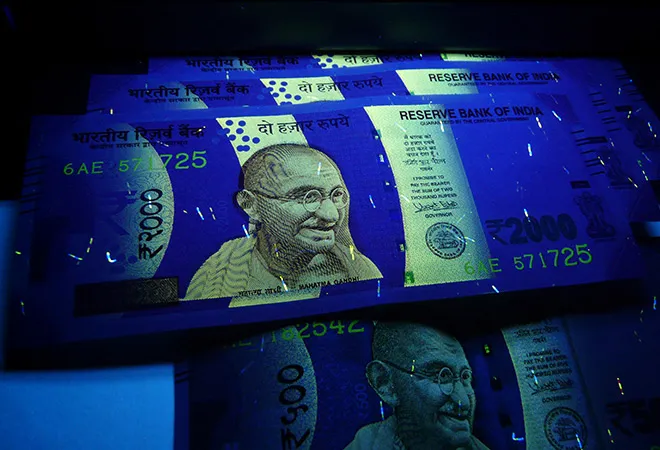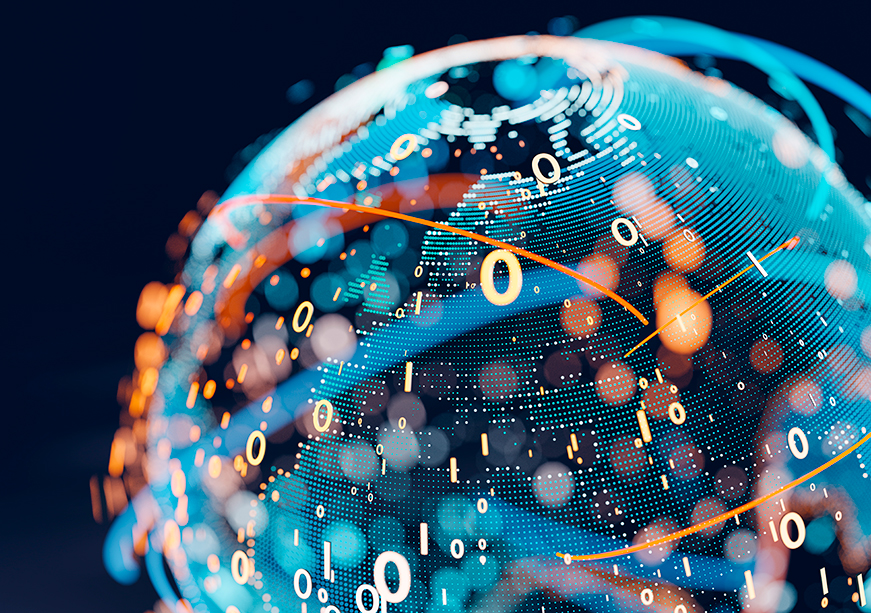 This is the second part in an ongoing series on digitisation of the Indian economy.
Read the first part ► India is adopting digital payments like never before, but cash too seems here to stay
This is the second part in an ongoing series on digitisation of the Indian economy.
Read the first part ► India is adopting digital payments like never before, but cash too seems here to stay
On 16 February, I analysed the Reserve Bank of India's (RBI) data and presented that the demonetisation exercise initiated by Prime Minister Narendra Modi on 8 November 2016 led to a jump in several measures of digitisation payments as compared to the trend pre-Nov. 8.
One key measure of the ongoing digitisation of the economy is the value of Point of Sale (Debit and Credit) transactions, PoS for short. Data released by the RBI in February for only four unnamed banks showed that, relative to the previous trend, this measure of digitisation went up. The RBI has now furnished revised data for November, December 2016 and January 2017, which brings out that PoS for all reporting banks is not just four. My previous analysis of what happened after 8 November of necessity relied on the partial data furnished by the RBI. But now that the data has been revised, I can redo the same analysis and what it reveals is startling.
Contrary to the ongoing media narrative that
digital payments are slipping, the reality is quite otherwise.
The media continue to indulge in misleading two or three data point analyses, which altogether neglects underlying trends.
Using the
statistical model I developed, it's possible to calculate the extent to which the now increased level of digital transactions with the full dataset relate to the underlying trends. Put simply, this is a parsimonious single variable model which postulates that any particular component of digital transaction, such as value of PoS transactions is a linear function of a constant term and the value of M3, a broad measure of the money stock, where all variables are rendered in natural logarithms.
These models are characterised by extremely sharp fits with the goodness of fit well over 90 percent in all cases and often even as high as 96 or 98 percent.
The first part in this series, based on RBI's data, showed an increase in both PoS and IMPS by value in December 2016 relative to trend and an increase again in January 2017, again relative to trend. In other words, the absolute drop between December and January masked the reality that PoS was still above the trend the model predicted before the structural break caused by demonetisation.
The new data paint an even more dramatic picture. I have augmented the research in the original piece, which considered only PoS and Immediate Payment Systems (IMPS), and added two other crucial elements of modern digital payments, which are mobile banking transactions and National Electronics Funds Transfer (NEFT) transactions. The latter is essentially an electronic transfer directly from one bank account to another, which is seamless across the Indian payment system. Both of these new components are modelled with the same parsimonious linear regression model as described above.
The data for PoS show that December 2016 saw a whopping 84 percent increase in PoS as compared to the trend and January 2017 saw a big 72 percent increase above trend. Again, while it's true there's a drop in absolute level, such two data point analyses misses the fact that PoS is still way above the pre-demonetisation trend.
Likewise, for IMPS, there was a 13 percent increase in December and a 12 percent increase in January, again relative to trend.
My research shows that, for mobile banking, there was a staggering 88 percent increase in December which tapered down to a still very large 70 percent increase in January.
Likewise, for NEFT, the figures show an increase of 27 percent and 23 percent in December and January, respectively.
Clearly PoS and mobile banking showed the biggest upturn in percentage terms, relative to trend, while IMPS and NEFT showed smaller upticks. This matches common sense, as PoS and mobile banking transactions would have been natural fallbacks to fill the breach given the cash crunch.
I do not make a similar calculation, unlike media accounts for February 2017, for which there's data for only four banks for PoS, not all the reporting banks, nor do we have complete data for the other components . Only when we have this full data can we say anything meaningful of what happened last month.
One facet of the government's digitisation drive is the Bharat Interface for Money (BHIM), an official payments launched by Prime Minister Modi on 30 December 2016. Official data from the National Payments Corporation of India reports that there were almost 14 million downloads as for 8 February 2017 and news reports suggest it crossed 17 million in late February. NPCI's (National Payments Corporation of India) data also shows a steady increase in the volume and value of BHIM transactions. This is a promising start.
NPCI's data also shows a steady increase in the volume and value of BHIM transactions.
Yet, despite all of the hype and the government's stated commitments to push digitisation, there are some reasons for concern. For one thing, admittedly anecdotal evidence suggests that after an initial adoption of digital payments methods, some smaller merchants and traders are now reverting to cash, since the liquidity crunch has largely eased. By the same token, some consumers are now reverting to cash, which is back in ATMs. The reasons for this are not purely that individuals and merchants would like to keep transactions off the books and out of the tax net, although this is almost surely a factor. Other more mundane reasons include the high frequency of failed transactions, network issues and high transaction costs. Some merchants, for example, complain that they can't get money out of some payments apps into their bank accounts and meanwhile such payments apps also typically limit the value of transactions in a given month unless customers go through cumbersome and time consuming KYC procedures. This is one advantage of BHIM, which being an official product of the NPCI uses the Unified Payments Interface (UPI). In other words, it's linked directly to a user's bank account through the RBI's regulated payments system and does not rely on third party commercial payment mechanisms.
All these new data I've analysed still leaves open the question whether the big jump above trend represents a short-term blip in the aftermath of demonetisation, or whether we're settling into a new equilibrium with permanently higher shares of digitisation in total transactions.
Analytically, a question we will not be able to answer until we have more data is what share of the current jump above trend represents a permanent shift and what share is a transitory jump only in the wake of demonetisation.
Common sense suggests that part of the uptick in digital payments is likely to represent a long term structural shift. Otherwise, when the cash crunch largely disappeared in January 2017, one ought to have expected a quick return to the pre-Nov. 8 trends. That has not yet happened, holding out the possibility that a basic behavioural change might have occurred. Still, the fact that the data nevertheless show a slow reversion to trend means we will not be able to say anything definitively for several more months if not longer.
The RBI, Ministry of Finance and Prime Minister's Office will need to be vigilant and continue to monitor the data on digital transactions.
The views expressed above belong to the author(s). ORF research and analyses now available on Telegram! Click here to access our curated content — blogs, longforms and interviews.



 This is the second part in an ongoing series on digitisation of the Indian economy.
Read the first part ►
This is the second part in an ongoing series on digitisation of the Indian economy.
Read the first part ►  PREV
PREV


